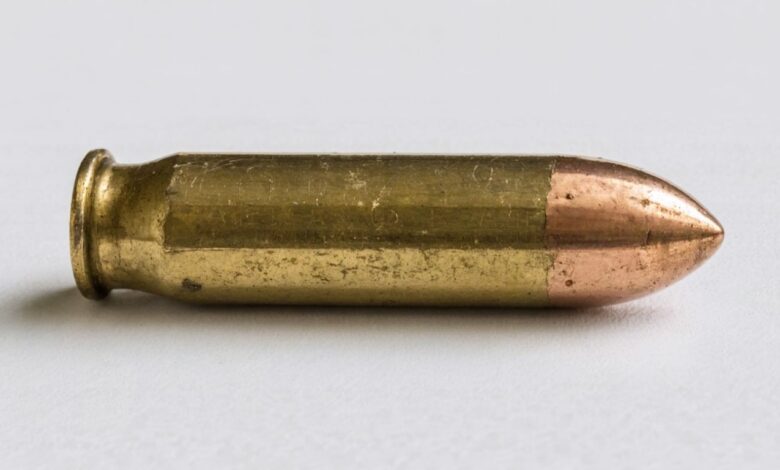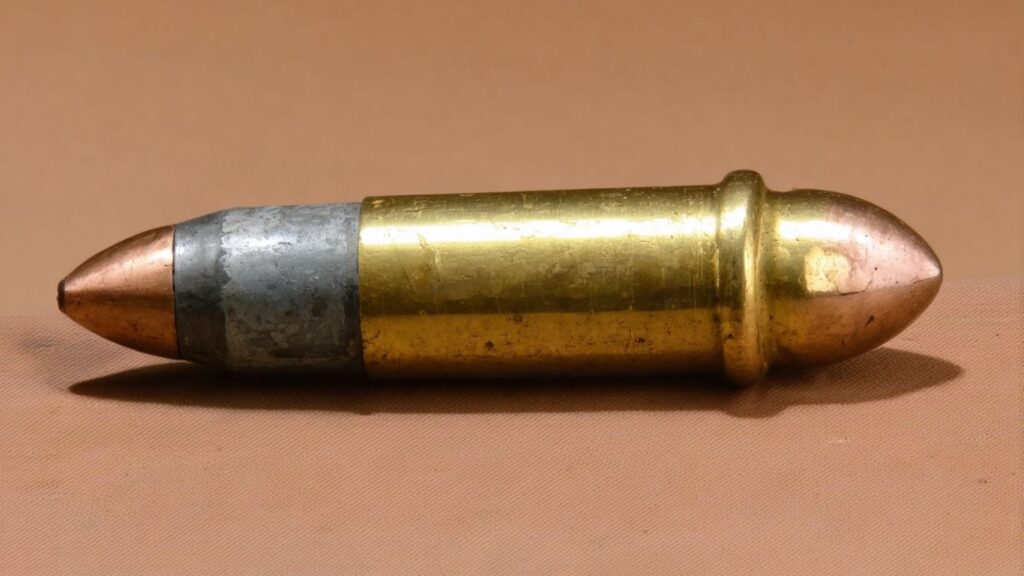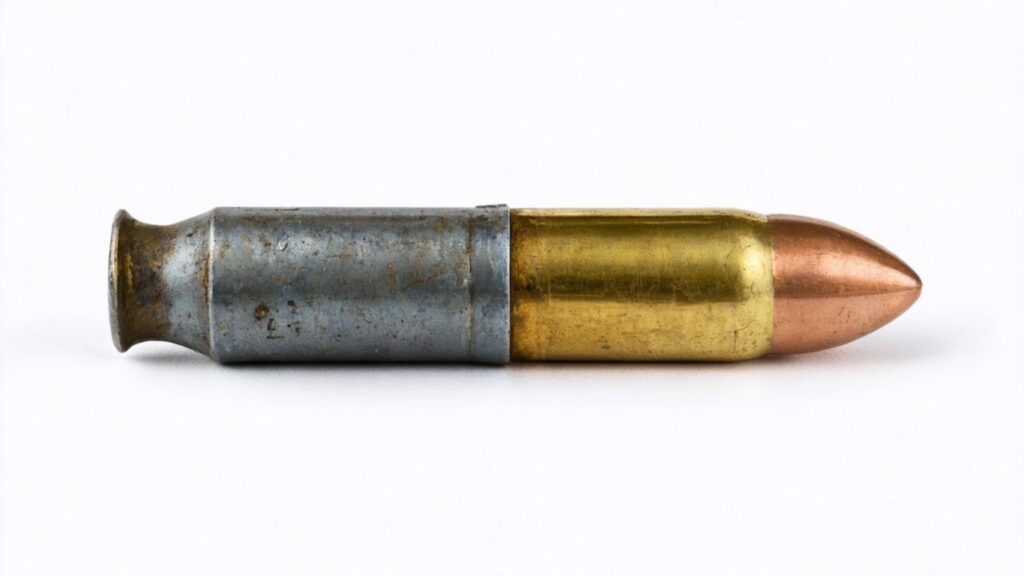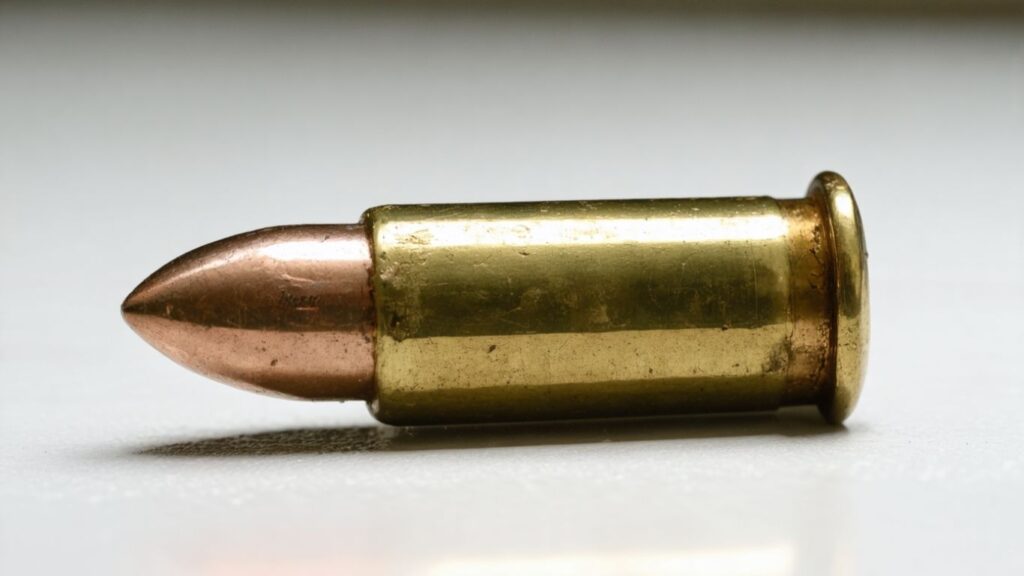Uncovering the Past: You Won’t Believe What This Civil War Bullet Revealed After 160 Years

Introduction
The Civil War bullet is far more than an aged piece of metal. It’s a gripping relic from America’s most devastating conflict, one that still teaches us about battlefield strategy, medical practices, and human perseverance. Whether buried in the ground, lodged in old bones, or displayed in a museum, the Civil War bullet holds secrets that continue to surface, even 160 years later.
The Evolution of Ammunition During the Civil War

During the early Civil War period, outdated smoothbore muskets fired round lead balls with limited accuracy and range. Soldiers had to get dangerously close to their enemies for these weapons to be effective. However, the development of rifled muskets and conical-shaped Minié bullets brought a dramatic shift in battlefield dynamics.
Rifled muskets featured spiral grooves inside the barrel, which caused the bullet to spin and travel farther and straighter. The Minié ball, a soft lead bullet with a hollow base, expanded upon firing, tightly engaging the barrel’s rifling. This resulted in significantly improved accuracy, higher velocity, and deadly penetration, making the war bloodier and more lethal than previous conflicts.
Types of Civil War Bullets
Minié Ball
The Minié ball was the most iconic and widely used bullet during the Civil War. Named after its French inventor, Claude-Étienne Minié, this conical bullet had a hollow base that expanded when fired. Made of soft lead, it inflicted catastrophic damage upon impact. Its efficiency and adaptability made it the standard ammunition for both Union and Confederate forces.
Enfield Bullet
Imported from Britain, the Enfield bullet was commonly used with the British-made Pattern 1853 Enfield rifle. The Confederacy, heavily reliant on imported arms and ammunition due to blockades, often used Enfield bullets. These bullets were similar in design to the Minié ball but were optimized for British rifles and noted for their reliability in the field.
Williams Cleaner Bullet
Invented by Elijah D. Williams, this bullet was designed not just to wound but to clean the rifle barrel with each shot. It had a zinc base intended to scrape fouling (residue from previous gunfire) from the barrel. While not as commonly used as the Minié ball, it was issued to Union troops in an attempt to improve long-term weapon performance.
Round Musket Balls
Round musket balls were standard in earlier conflicts and were still in use at the beginning of the Civil War. However, they lacked the range and accuracy of rifled bullets. As the war progressed, they were largely phased out in favor of more modern ammunition.
Experimental Bullets
The Civil War was a time of innovation, and various experimental bullets were tested by both sides. These included multi-projectile rounds, explosive tips, and aerodynamic designs aimed at increasing damage or accuracy. While not widely adopted, they reflect the relentless push toward technological advancement in warfare.
The Deadly Effect of Civil War Bullets
The wounds caused by Civil War bullets were gruesome and often fatal. The soft lead deformed upon impact, creating large, jagged wounds that shattered bones and shredded tissue. These injuries overwhelmed field hospitals, where surgeons worked with limited tools, minimal anesthesia, and no understanding of germ theory.
Amputations were a common response to limb injuries, as shattered bones were beyond repair with the medical knowledge of the time. Infection was rampant due to non-sterile instruments and environments. It’s estimated that two-thirds of Civil War deaths resulted from disease or infection, many beginning with a bullet wound.
Famous Civil War Bullet Stories

One of the most astonishing stories involves a Union soldier who was shot in the side during the Battle of Gettysburg. The bullet exited his body and embedded in another soldier standing behind him. Miraculously, both men survived. This tale has been verified through military records and remains a testament to the bullet’s unpredictable path.
Another bizarre incident comes from a museum in Virginia, where a tree stump is displayed with a Civil War bullet lodged in it, alongside a human femur fragment. It’s believed the bullet hit a soldier, passed through his leg, and ended up in the tree, which later grew around it. Stories like these emphasize how even a single bullet can tell a haunting tale.
In another well-documented case, a bullet removed from a soldier during surgery was found decades later in a family heirloom collection, with a note detailing the soldier’s name, battle, and survival. It became a focal point for genealogical research, linking generations through a single artifact.
Civil War Bullet Collecting Today
Why They Fascinate Collectors
During collectible pursuits, Civil War bullets draw attention for two main reasons: their historical antiquity and their capacity to represent individual narratives and significant moments from history. Each bullet from this period maintains its potential to identify the exact soldier or historical battle, or moment it originated from. People who hold Civil War bullets experience a connection with history through physical contact.
Identification and Authentication
To properly identify Civil War bullets, collectors examine several characteristics: patina (natural oxidation that confirms age), rifling marks (indicating the type of firearm used), and mold seams (from bullet casting). Provenance, such as documents or known recovery sites, adds significantly to value and authenticity.
Market Value
The value of Civil War bullets varies. A common, dropped Minié ball might fetch $5–$15. A fired bullet, especially one flattened upon impact or recovered from a known battlefield, might sell for $50–$200 or more. Bullets connected to famous battles or units’ command even higher prices, especially when accompanied by documentation.
Legal Considerations
Collectors must follow all federal, state, and local laws regarding artifact recovery. National parks and many historic sites prohibit metal detecting or relic hunting. Recovery from private land is legal with the owner’s permission. Provenance without illegal excavation is crucial for ethical collecting.
Where Civil War Bullets Are Found
Civil War bullets are still uncovered in various places, each revealing a fragment of history. Common discovery spots include:
- Private property near major battlefields like Gettysburg, Antietam, or Shiloh
- Campsites, often located in wooded areas or along rivers
- Former encampments and picket posts, identifiable through historical maps
- Estate sales and auctions, where heirlooms surface decades later
In some cases, construction crews uncover bullets while digging foundations near historic sites. These accidental finds often lead to local historical investigations.
Preservation and Display
Preserving a Civil War bullet properly ensures its survival for future generations:
- Avoid harsh cleaning chemicals, as they remove the patina and historical integrity
- Store in a dry, stable environment to prevent corrosion
- Use labeled shadow boxes or display cases, noting where and when the bullet was found
Some collectors go further by framing bullets with maps, photos, and mini-documents that tell the story of the battle or soldier they’re connected to. This transforms the bullet from an object into an educational display.
Civil War Bullets in Forensics and Research

Historians and forensic experts use Civil War bullets to:
- Reconstruct troop movements based on bullet trajectories and battlefield layouts
- Validate or refute eyewitness accounts from soldiers or local civilians
- Identify firearm types used in specific battles
- Study the lethality and impact of different bullet designs, especially in forensic anthropology contexts
Bullets provide archaeologists with rare opportunities to locate unrecorded skirmishes and rewrite local historical accounts.
FAQ Section
What was the bullet used in the Civil War?
The most common was the Minié ball, a conical lead bullet used with rifled muskets.
How much is a Civil War bullet worth today?
Values range from $5 for common bullets to several hundred for rare or historically significant ones.
Why do Civil War bullets turn white?
They develop a white patina due to lead oxidation, especially when buried in the ground.
What is the most valuable bullet in the Civil War?
Bullets linked to key battles, personal stories, or embedded in bone/tree often fetch the highest prices.
Why was the Civil War so bloody?
Outdated tactics combined with modern weapons like rifled muskets and Minié balls led to massive casualties.
Why did Civil War bullets have grooves?
Grooves allowed expansion to grip rifle barrels, improving accuracy and range.
What weapon caused 90% of all casualties during the Civil War?
The rifled musket, primarily using the Minié bullet, was responsible for the majority of deaths.
What did Civil War guns shoot?
Mostly lead bullets, including Minié balls, round balls, and specialty rounds.
What killed most Civil War soldiers?
Disease was the leading killer, accounting for about two-thirds of all deaths.
What was the worst weapon in the Civil War?
In terms of suffering caused, the Minié bullet arguably caused the most devastating wounds.
What were the benefits of the Minié bullet?
It allowed for faster loading, greater accuracy, and longer range.
What killed more soldiers than bullets in the Civil War?
Illness and infection killed more than actual combat.
What weapon killed the most soldiers?
The rifled musket firing Minié balls was the deadliest.
What was the most powerful weapon in the Civil War?
Artillery like the 3-inch ordnance rifle was powerful, but the Minié bullet-infused rifled musket was most lethal in terms of casualties.
What was the greatest danger for soldiers during the Civil War?
Besides enemy fire, disease, unsanitary conditions, and poor medical care posed great risks.
Were Civil War cannonballs explosive?
Yes, some were hollow and packed with gunpowder to explode on impact.
What was the new bullet called?
The “Minié ball” was the revolutionary new bullet of the Civil War.
Why do Civil War bullets look white?
The white appearance comes from lead corrosion forming a patina.
Why do silver bullets exist?
Primarily folklore, silver bullets are tied to myths about werewolves and lack real historical use in war.
Why was the death toll so high in the Civil War?
Combination of advanced weapons, poor medical practices, and widespread disease.
Which war killed the most people?
World War II had the highest death toll globally. In U.S. history, the Civil War remains the deadliest.
Was the Civil War bloodier than WWII?
In terms of American lives lost, yes—the Civil War had more U.S. military deaths than any other conflict.
What ended the Civil War?
The surrender of General Robert E. Lee at Appomattox Court House in April 1865 marked the end.
What killed more soldiers in the Civil War than bullets?
Diseases, especially dysentery, typhoid, and pneumonia.
What is the biggest bullet in history?
The largest caliber rounds are typically tank or naval gun shells, far larger than anything from the Civil War.
What is the most expensive bullet gun?
Antique firearms linked to historical figures or events can sell for hundreds of thousands of dollars.
Conclusion
Each Civil War bullet tells a story of battle, pain, survival, and innovation. From shaping combat to transforming medical practices, the bullet remains one of the most important symbols of the war. Some have surfaced decades later with astonishing tales. After 160 years, they still reveal secrets of a nation at war.
SEE MORE INFORMATION Buzznewsdaily




